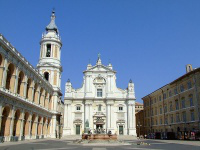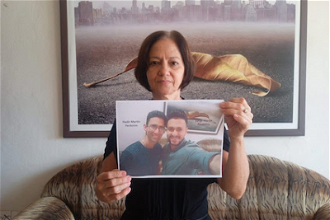Pope visits Loreto: 'where God dwells all are at home'

Basilica at Loreto
Pope Benedict made a pastoral visit to the Marian shrine of Loreto on Thursday, where entrusted to the Blessed Virgin two forthcoming events: the Synod of Bishops on new evangelisation which is to run from 7 to 28 October, and the Year of Faith which will begin on 11 October.
The Holy Father's visit was also intended to commemorate the fiftieth anniversary of Blessed Pope John XXIII's pilgrimage to Loreto during which, on the eve of the inauguration of Vatican II, he entrusted the Council to the Virgin.
The shrine of Loreto, which has been a pilgrim destination since the 14th century, according to tradition, contains the house where Mary lived in Nazareth. According to popular piety it was transported by angels to Loreto in 1294, after the expulsion of the Crusaders from the Holy Land.
Recent examinations of documents and archaeological remains including excavations under the Holy House, as well as other studies, are giving increasing weight to the hypothesis that the stones of the Holy House are genuine and were transported to Loreto by ship by the Angelos family who ruled the region at that time. The House is the place where the Virgin was born, lived with St Joseph, received the Annunciation from Gabriel and conceived the Son of God. It is therefore associated with the Mystery of the Incarnation.
Mary's house in Nazareth was composed of two parts: a grotto which is still to be seen in the Basilica of the Annunciation in Nazareth, and a house with three stone walls. Comparative studies between the Holy House of Loreto and the grotto of Nazareth have revealed the coexistence and contiguity of the two. Another recent study on the way in which the stone has been worked - in the manner used by the Nabateans which was widespread in Galilee at Jesus' time - also confirms the popular tradition. When the three walls of the Holy House arrived in Loreto they were set up, without foundations, in a public street, but almost immediately they became the object of the extraordinary measures of care and protection afforded to a precious relic.
Pope Benedict spent most of the day at the shrine and celebrated Mass there. During his homily he said: "It is precisely here at Loreto that we have the opportunity to attend the school of Mary who was called blessed because she believed. ... Mary offered her very body; she placed her entire being at the disposal of God’s will, becoming the 'place' of His presence, a 'place' of dwelling for the Son of God. ... The will of Mary coincides with the will of the Son in the Father’s unique project of love and, in her, heaven and earth are united, God the Creator is united to His creature. God becomes man, and Mary becomes a 'living house' for the Lord, a temple where the Most High dwells."
"Here at Loreto fifty years ago, Blessed John XXIII issued an invitation to contemplate this mystery. ... He went on to affirm that the aim of the Council itself was to spread ever wider the beneficial impact of the Incarnation and Redemption on all spheres of life. This invitation resounds today with particular urgency. In the present crisis affecting not only the economy but also many sectors of society, the Incarnation of the Son of God speaks to us of how important man is to God, and God to man. Without God, man ultimately chooses selfishness over solidarity and love, material things over values, having over being. We must return to God, so that man may return to being man. With God, even in difficult times or moments of crisis, there is always a horizon of hope: the Incarnation tells us that we are never alone, that God has come to humanity and that He accompanies us.
"The idea of the Son of God dwelling in the 'living house', the temple which is Mary, leads us to another thought: we must recognise that where God dwells, all are 'at home'; wherever Christ dwells, His brothers and sisters are no longer strangers.
Source: VIS


















